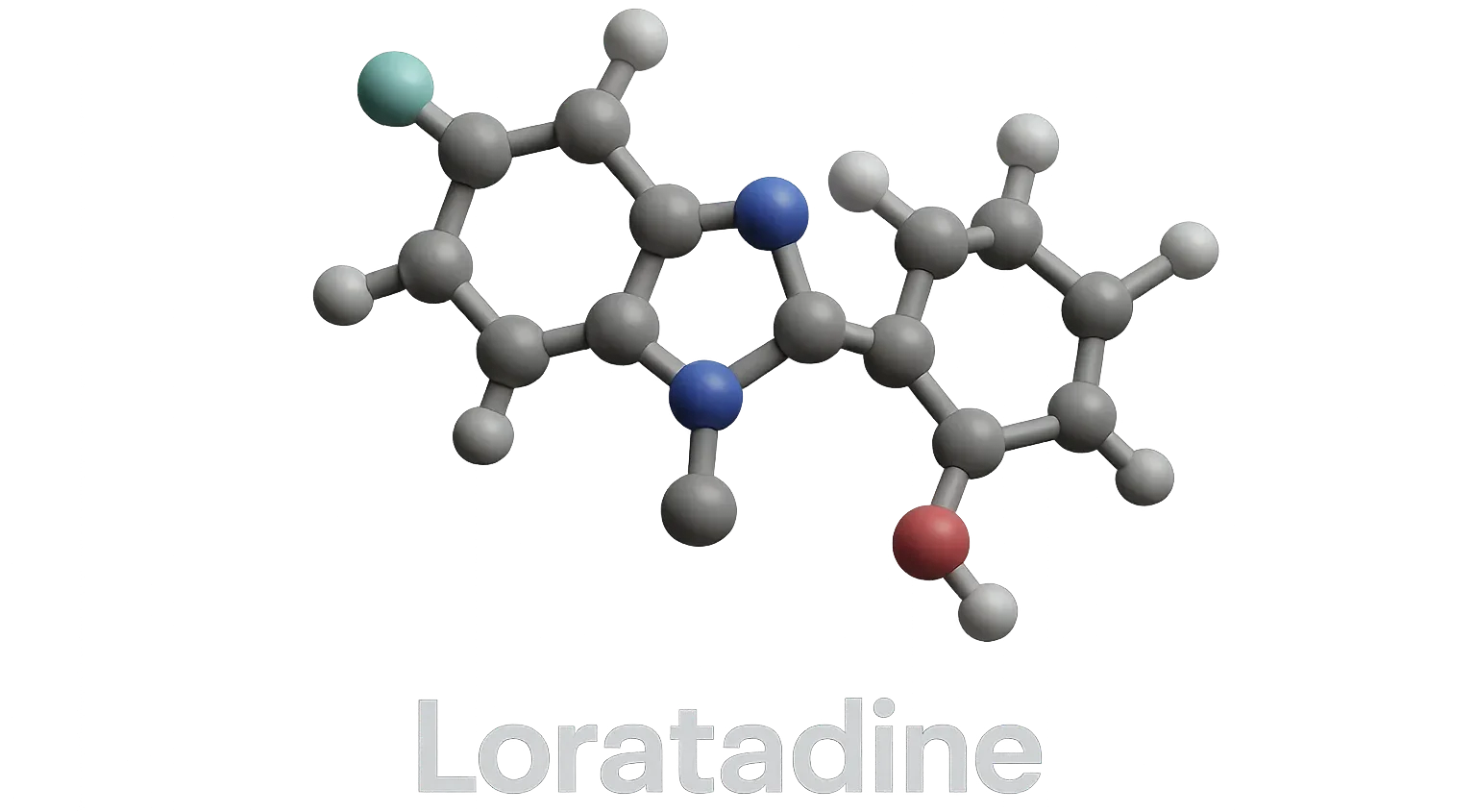Loratadine is a second-generation, non-sedating H₁-antihistamine commonly used to manage allergic rhinitis, urticaria, and seasonal allergic reactions. It features a tricyclic structure that enhances peripheral selectivity and reduces central nervous system penetration, resulting in minimal sedation. It works by selectively blocking peripheral H₁ receptors, providing long-lasting relief from histamine-induced symptoms such as sneezing, itching, and nasal congestion.
Structure of Loratadine

- Loratadine is a second-generation antihistamine with a tricyclic structure containing a piperidine ring and an ester linkage.
- Chemical Formula: C₂₁H₂₀ClNO₂
Mode of Action
- Selective peripheral H₁-receptor antagonist with minimal CNS penetration, thus reducing sedation.
- It provides long-lasting antihistaminic effects.
Uses
- Allergic Rhinitis: Treats symptoms like sneezing, itching, and runny nose.
- Chronic Urticaria: Alleviates hives and skin itching.
- Non-Allergic Rhinitis: Effective in treating vasomotor rhinitis.

